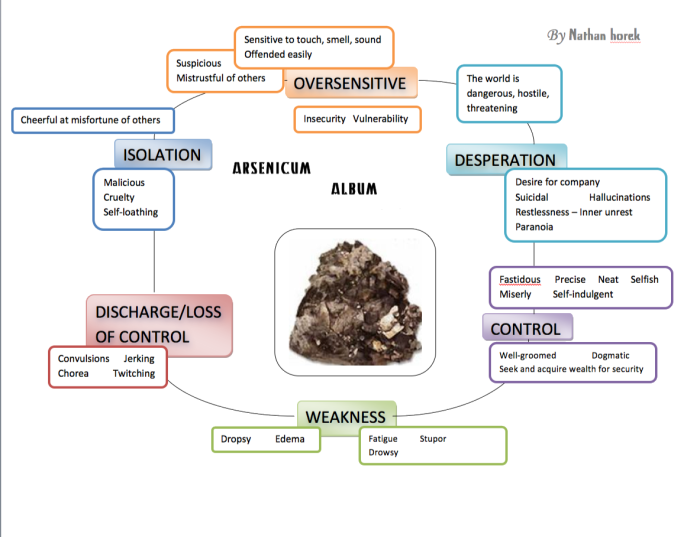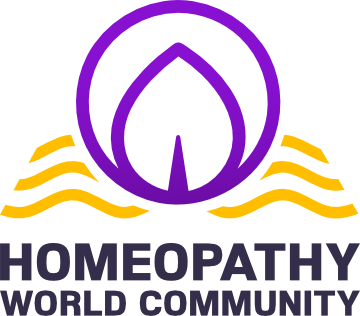
Arsenicum Album Resource Page
We find the poisonous element arsenic and chemical compounds pervasive in our environment. Not only has it been used in building materials for many decades, as an enhancer for race-horses, to improve anemia and even in the manufacture of textiles and in the historical preparation of “green” wallpapers.
Arsenic in groundwater of the United States
Arsenic in groundwater is largely the result of minerals dissolving from weathered rocks and soils. Several types of cancer have been linked to arsenic in water. In 2001 the US Environmental Protection Agency lowered the maximum level of arsenic permitted in drinking water from 50 micrograms per liter (ug/L) to 10 ug/L.
Consumer Reports tested 32 different types of rice and dozens of rice products, all of them contained arsenic. Many of the samples had troubling levels of inorganic arsenic, which is the most toxic form. “Inorganic arsenic is a known human carcinogen that has been linked to skin, lung, and bladder cancer,” said Andrea Rock of Consumer Reports.
Truth In Labeling
A pet peeve concerns the fact that we do not have truth in labeling, whether on packaging or within the manufacturing and processing of our foods and products. We will have to fight for our rights to know. I wonder why these facts must be hidden from the consumer?
The latest report indicates “scientific studies suggesting that poultry on factory farms are routinely fed caffeine, active ingredients of Tylenol and Benadryl, banned antibiotics and even arsenic.”
Chickens may be the most abused animal on earth. Their living conditions are inhuman, the deaths horrendous, they are fed stimulants to keep them awake and from not falling on the floor, while the environmental conditions breed disease in such close quarters, all the while being drugged to death. Humans, the top of the food chain, ingest everything that went into the chicken, including their adrenaline, fear, despair and hopelessness. How many chicken meals have you eaten lately?
Arsenic in Feed Lots For Animals Eaten By Humans
Animal feed for chickens and hogs typically contain arsenic as a means to make the meat an appetizing pink color and reduce infections instead of provide clean hygienic living quarters with space to move about and breath fresh outdoor air.
For decades arsenic has been used against infectious disease such as syphilis. The industry considers this perfectly safe due the the small amounts in the chemical, but they do not consider the accumulation of the toxins over the lifetime of ingestion. Humans have increased the quantities of these meat products and no real scientific studies have researched the correlation between the change in diet and disease.
We must take into consideration the food chain. I’m guessing that the persons in the feedlot industry who must work with the arsenic would also be effected and hopefully protective measures have been put in place so workers do not inhale this toxin.
Consumers are consistently told in response to concerns and inquiries that there is “no evidence” that low levels of arsenic harm either the chickens or the people eating the chickens or pork products. I ask you, “Do you believe this?”
When scientists from Johns Hopkins University and Arizona State University examined ground chicken feathers to test for antibiotics they were surprised to find levels of arsenic, as well as other substances. Very often we can observe with the naked eye changes in our own nails and hair that have the ability to bio-accumulate substances. If you eat chickens, you are getting drugs and toxins in every bite.
Fluoroquinolones antibiotics (Cipro) was found in the feather meal. We know use of these banned drugs cause MRSA and antibiotic resistant super bugs.
Antihistamines were found in substantial meal samples.
Acetaminophen was found in meal samples.
Anti-depressants were found in meal samples out of China.
Caffeine from coffee pulp and green tea powder was found in most meal samples.
Forms of Arsenic in the Equine and Construction Industries
Death of horse mystery solved. Forensic scientists say champion Australian gelding Phar Lap died of arsenic poisoning. Phar Lap won 37 of his 51 starts before his death in mysterious circumstances at Menlo Park in California in April 1932. Days before his death, he won Mexico’s Agua Caliente Handicap, which was then the richest horse race in North America. Arsenic poisoning has long been suspected as the cause of Phar Lap’s death, but confirmation had been lacking until Thursday when researchers Dr. Ivan Kempson of the University of South Australia and Dermot Henry, manager of Natural Science Collections at Museum Victoria, released the findings of their forensic investigation. Kempson took six hairs from Phar Lap’s mane and analyzed them at the Advanced Photon Source Synchrotron in Chicago, finding that in the 40 hours before Phar Lap’s death the horse had ingested a massive dose of arsenic.
It appears an acceptable form of arsenic acts as a tonic for horses today. “Jurocyl (sodium arsanilate) is an organic arsenic tonic for horses. Stimulates appetite in picky eaters, and promotes healthy skin and coat growth. A general tonic in anaemias, debility, stress, illness & recovery.”
EPA Ban On CCA Wood Arsenic preservative (Chromated Copper Arsenate) in wood products and building materials may leach into the surrounding soil and plants, and due to salty taste may attract animals.
Chromated copper arsenate (CCA) is a chemical wood preservative containing chromium, copper and arsenic. CCA is used in pressure treated wood to protect wood from rotting due to insects and microbial agents. EPA has classified CCA as a restricted use product, for use only by certified pesticide applicators.
CCA has been used to pressure treat lumber since the 1940s. Since the 1970s, the majority of the wood used in outdoor residential settings has been CCA-treated wood. Pressure treated wood containing CCA is no longer being produced for use in most residential settings, including decks and playsets.
Skeptics Cannot Believe A Study That Finds Arsenic May Support Life. Felisa Wolfe-Simon of NASA’s Astrobiology Institute, stands by her claim that bacteria found at Mono Lake in eastern California could grow by substituting arsenic for phosphorus. Phosphorus is considered essential to life; arsenic, while chemically similar, is a poison. Another researcher, Rosemary Redfield of the University of British Columbia, reports that arsenic does not contribute to the growth of the bacteria. They suggest that the original results may have been skewed by an undetected contaminant in the arsenic the researchers used, but Dr. Wolfe-Simon points to the control samples to confirm her results.




